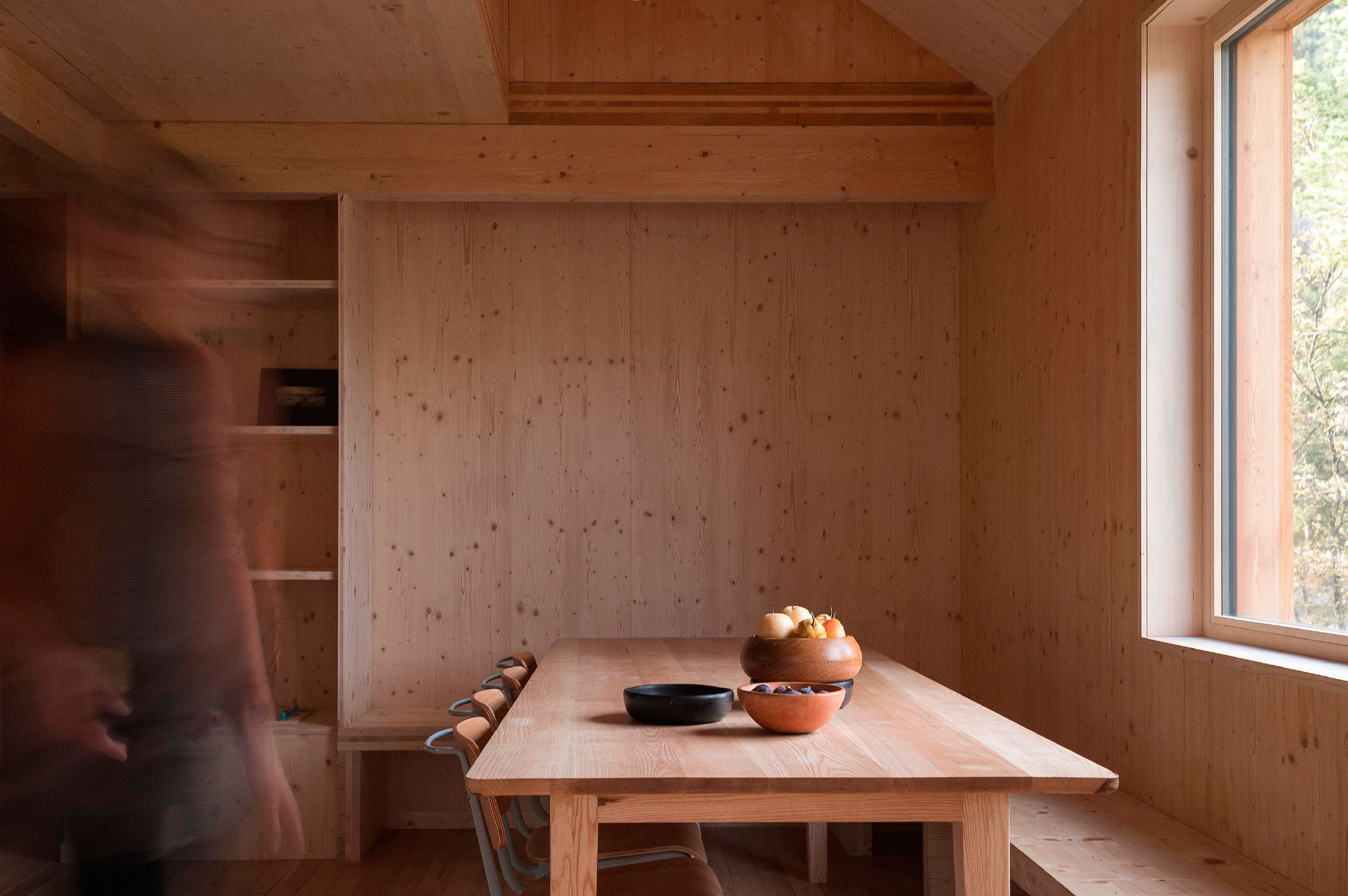The spaces are perceived when crossing the main door, and are distributed linearly on the ground floor, where the hall, the bedrooms, the living room and the garden are located, introduced by a change of pavement and whose generous volume opens widely to the exterior, framing views already oriented and participating in the distribution of the home, which allow the dialogue of the environment with the spaces designed for contemplation and everyday life.

Maison Les Marquises by Atelier AMASA. Photograph by Atelier AMASA.
Project description by Atelier Amasa
Covered with thin tall pine trees, the plot of this house keeps track of the old forest road leading to the Marquises farm. The remaining void between the two existing tree bouquets in the North and South opens up privileged views towards the summits of Sainte-Flavie in the West and Sauze in the East. This will be the location of the house, right in the center where no trees will be removed.
A house that shelters its environment.
From the site, the void invites us to penetrate the history of the place.
Paths that mark and tread the slope. Seeded forest and tight pine bouquets where trunk landscapes unfold under the shade of their high canopy.
Mountain landscapes and high peaks that can be glimpsed and guessed.
The compact program of an isolated and necessarily functional shelter. Sun and shades where you don’t expect them.
Seasons that clothe the floor sometimes green, sometimes white. Residents who here will be able to enjoy the entire landscape, its distant extension and its changing atmosphere invited indoor all year round.
The project is rooted in the gap left by an old woodland path, between two clusters of trees that we propose to be preserved.
Laid against the trees that delimit the terrain to the North, the volume of the house – composed of the stacking of 39 CLT panels – stretches its south facade and weaves a close link with the natural elements in the middle of the plot assuring the remnant land as a garden.
Maison Les Marquises by Atelier AMASA. Photograph by Atelier AMASA.
From the West, where the technical and storage rooms are located, the access is guided smoothly by the slope. Past the front door, the inner world of the house unfolds as an echo of the land where it is grounded. A linear sequence of contiguous spaces (vestibule, distribution, garden room) spreads the circulation to East on the ground floor. The flow and gaze spans through the ground level in its length and guide us to the garden room located in the southeast corner whose generous volume opens widely to the outside – a transition space intended to bring the parcel inside when picnic, snow games or other family activities will occur. In the northeast, two bedrooms and a bathroom open to the forest where the morning light is filtered.
The distribution of an ambitious program in a limited surface guides the quest for compactness and the suppression of circulations in favor of habitable transition spaces. The spiral staircase – along with placing the public program on the first level – responds to the desire from clients of a house-cabin. It also serves a large dormitory under the roof and relates with the many thin trunks and trees around the house, compact and upwards.
Maison Les Marquises by Atelier AMASA. Photograph by Atelier AMASA.
Upstairs, the place of common life, perched in the canopy and open to the two North and South forests, dialogues with the site allowing to all public uses a contemplative, transversal connection. The views are framed, oriented and participate in the distinction of spaces (living room, dining room, kitchen).
A covered terrace contained in the volume of the house opens in the southeast corner – again: this sheltered outdoor space should allow enjoyment of the outside all year round regardless/ness the weather. As a counterpoint to the framed views.

















































